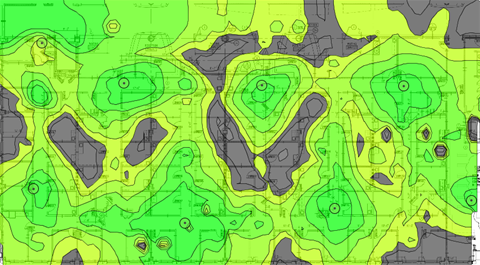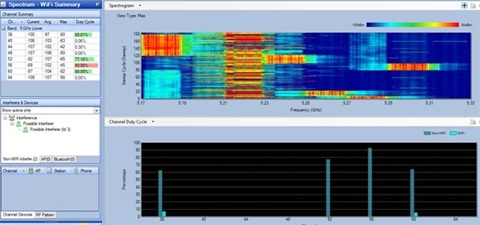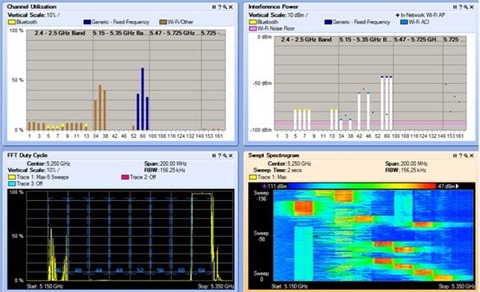WLAN Remediation
WLAN Remediation can mean many things. It mostly means the WLAN is not meeting your requirements.
Gap Analysis: A validation survey can provide you with what is most commonly referred to as a "heat map". Client devices "hear" the WLAN at different levels depending on what type of hardware you are using. Some client devices experience "dead zones" when some do not, since all hardware is not equal. A gap analysis can show you where your issues are, and can assist in the remediation of the issue.
The graphic to the left is of an actual WLAN where a certain model of WLAN client "hears" the WLAN differently than other clients and therefore sees coverage gaps. This information is used to help make decisions on where to add/move access points to meet the customer's requirements.
Spectrum Analysis
Spectrum analysis can be tricky. Interference isn't always "on" - it can appear random to the user, however when tracked down it becomes obvious it is not. This example is in a hospital, in the operating rooms. The ORs aren't being used 24x7x365, therefore it was difficult to find. Four camera used in surgery were turned on and interfered "randomly" with the WLAN, knocking out four WLAN channels.
Once identified, this interference can be tuned out of the WLAN with proper channel planning. If your organization is big enough, a spectrum policy might be justified.


